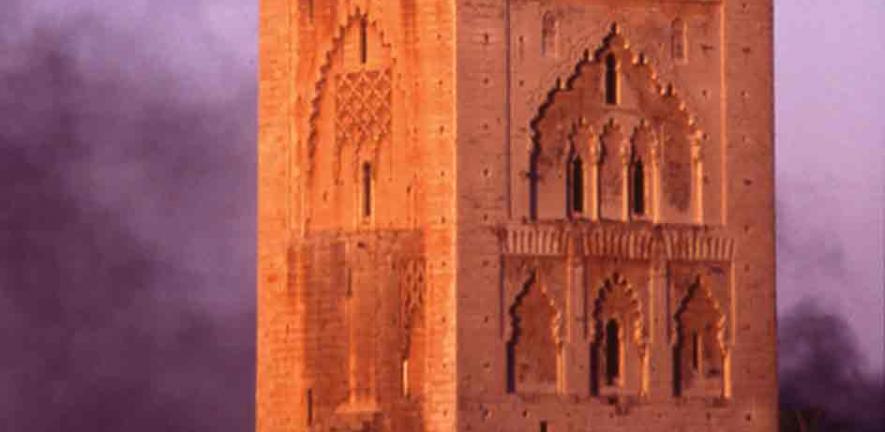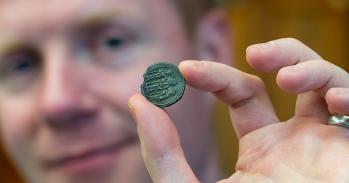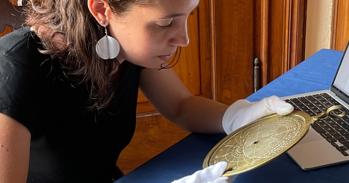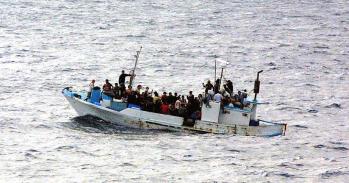
By sifting through medieval Arabic chronicles from Islamic Spain and Morocco, a picture emerges of how the evocative, but frequently abandoned, palatial remains we see today were experienced by the society that built them.
By sifting through medieval Arabic chronicles from Islamic Spain and Morocco, a picture emerges of how the evocative, but frequently abandoned, palatial remains we see today were experienced by the society that built them.
Perhaps what is most relevant to us today is to see a sophisticated and confident Islamic society willing to integrate ‘others’ and able to contribute beyond its own boundaries.
Dr Amira Bennison
The influential 14th-century Muslim scholar Ibn Khaldun once said that the size of monuments is proportionate to the power of their founders and that we may indeed wonder at the strength and prowess of our predecessors as we view their remains. In Spain and Morocco, Islamic mosques, palaces, towers and fountains can be discovered everywhere, from the delicate Ja’fariyya palace in Zaragosa to the soaring tower of the Cathedral of Seville, once minaret of the city’s great mosque, and its sister towers in Rabat and Marrakesh. From Cordoba to the Sahara, quintessentially Arab arabesques intermingle with the cross-hatched brick designs of the Berbers and an occasional motif borrowed from the Christians of Iberia – a scallop shell in Marrakesh and shields inscribed in Arabic in the famous Alhambra palace in Granada.
However, splendid though they are, it’s not the aesthetic qualities of this architecture that primarily interest Dr Amira Bennison in the Faculty of Oriental Studies. As a historian, her interests lie in exploring the ramifications of Ibn Khaldun’s comments and seeing what these buildings tell us about the dynasties that constructed them and the people over whom they ruled. In a sense she is interested in physical structures as propaganda.
To answer these questions, Dr Bennison has spent the past few years sifting through Arabic chronicles from medieval Islamic Iberia and Morocco for descriptions of buildings and cities, and the ceremonies of power that took place within them, to give a better understanding of how each dynasty was viewed by its Muslim, Christian and Jewish inhabitants. As more material is gathered, it is compared and contrasted with archaeological and architectural evidence to create a picture of how the remains we see today were experienced by the society that produced them.
The legacy of the Umayyads
One of the cities for which most detail has been gathered is Cordoba during the Umayyad era (757–1031). As any tourist will know, Cordoba’s greatest Islamic monument is its Great Mosque, but of equal importance is the less well-known palace-city of Madinat al-Zahra’ located just three miles outside the city. Each of these sites expressed Umayyad self-identity in a different way.
When the Umayyads founded the Great Mosque in the late 780s, a small Muslim elite ruled a vast Christian subject population. In constructing the mosque, they cleverly emphasised continuities with the past as well as establishing Islam’s new place in Cordoba. The mosque was built on the site of a church that Christians and Muslims had reputedly shared before Muslims purchased it from their Christian fellows. Inside, the horseshoe arches evoked Visigothic church architecture, and the alternating red and cream voissoirs created a visual link with the Roman aquaduct at Mérida. Moreover, the derelict Roman bridge over the Guadalquivir river close to the mosque was carefully restored and came to be celebrated as one of the wonders of Islamic Spain. In such ways, the Umayyads projected an image of themselves as the legitimate heirs of preceding non-Muslim regimes.
The message of Madinat al-Zahra’, built in the 10th century when the majority of the population had become Muslim, was different. It celebrated the religious and political role of the Umayyads as the foremost Muslim rulers of their day and created a space for grand international receptions.
The Umayyads understood their new role in an expansive way, which grew out of their earlier sense of their imperial Mediterranean heritage. They welcomed visitors from as far afield as Saxony, and sent embassies back to the court of Otto I. They corresponded with the Byzantine emperors as equals and requested craftsmen to help refurbish the Great Mosque. Moreover, the Christians and Jews of Cordoba played an important role at the new Umayyad court as translators, ambassadors and patrons of culture.
Fortresses of the faith
Although the Umayyad polity collapsed in the 11th century, successive regimes in Spain and Morocco made references back to the Umayyad model in their own architecture. But the growing threat to Muslim power from the Christian kingdoms of the north heralded a new more defensive and militant attitude on the part of rulers such as the Berber Almoravids and Almohads, who made much of their ability to defend the lands of Islam and rather less of Islam’s tolerant and integrative aspects.
During this period, fortifications began to dominate the landscape, and the Almohad great mosques built in Seville, Rabat, Marrakesh and many other cities loomed large as fortresses of the faith. The sources show that religious minorities lost their place in society and began to face the kind of persecution characteristic of societies on the defensive.
Portraits of everyday life
The Arabic chronicles also yield delightful vignettes of a society distant from our own but familiar in its humanity. As one reads through the 11th-century chronicle of Ibn Hayyan, one comes across picnics by the side of the Guadalquivir river at which poetry was recited in the shade of the trees; a sudden rain storm one Friday that drenched the congregation in the great mosque, who scattered for cover leading to the abandonment of the prayer that week; and bitter rivalries for the affections of the ruler. The sources also reveal the violent side of this lost world: dead rebels suspended before the gates of the palace as a warning to others and dreadful cycles of famine and disease.
Relevance to modern times
Perhaps what is most relevant to us today is to see a sophisticated and confident Islamic society willing to integrate ‘others’ and able to contribute beyond its own boundaries. The Muslims of the medieval west were proud and exhibited a sense of their cultural and religious superiority but they were also practical. Political relationships were dictated by good sense not religious affiliations, marriages frequently took place across confessional lines, and rulers knew when to evoke polemical rhetoric and when to leave it quietly to one side.
When the historical context changed, architecture, ideology and society itself also began to alter. Although Dr Bennison’s research focuses on specific questions, in a more general sense Islamic Spain is a site for re-thinking stereotypes and for recognising the contribution made by Muslims of an earlier age to ecumenicism and cultural exchange. It also reminds us that religious invectives and intolerance are not inherent to any faith but are the product of specific political, economic and social contexts.
For more information, please contact the author Dr Amira K Bennison (knb21@cam.ac.uk) at the Faculty of Oriental Studies.
This work is licensed under a Creative Commons Licence. If you use this content on your site please link back to this page.





